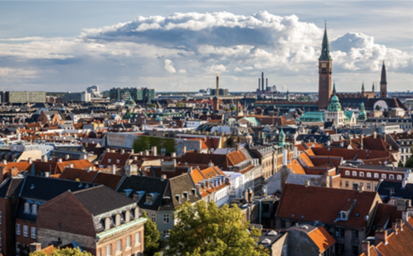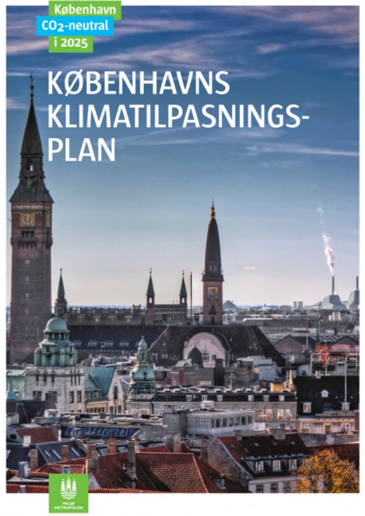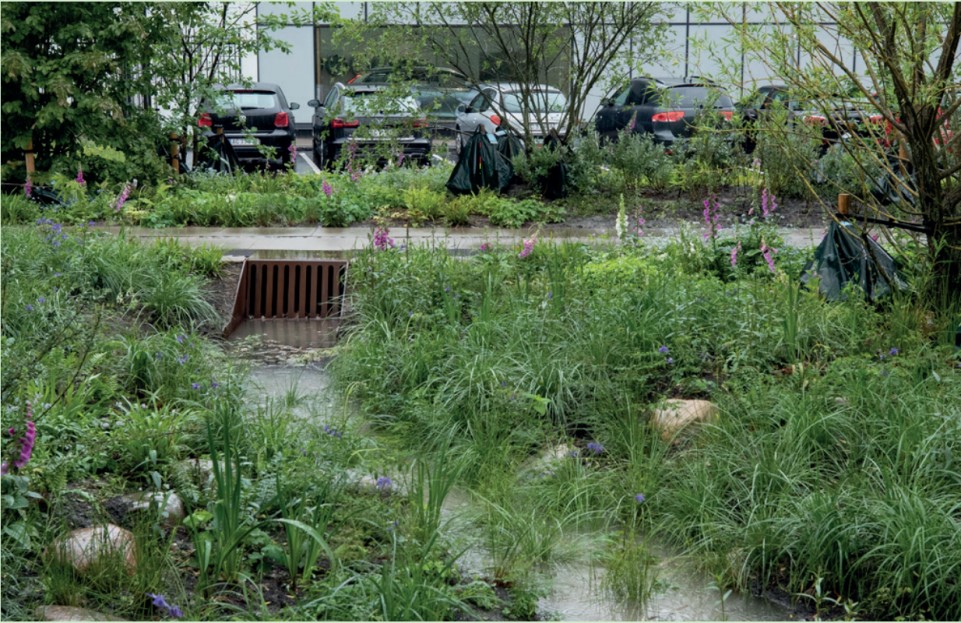Echo of Cities | Copenhagen, Denmark: Copenhagen Climate Resilient Neighborhood
Copenhagen was a winner of the 3rd Guangzhou International Award for Urban Innovation in 2016 for its initiative of Climate Resilient Neighborhood. The project aims to reduce the damage of severe climate through adopting green climate resilient solutions in different neighborhoods. In such a way, Copenhagen can build better green city space and a more resilient city facing climate change.
When getting the award, most of the climate resilient neighborhood programs in Copenhagen were still ongoing. Do the results fit with the expectations? Today’s Echo of Cities will brief you on the prelude and sequel of the initiative and the sustainable development road of Copenhagen, the climate resilient city.

Figure: Copenhagen, Denmark
About the initiative: Urban Renewal under Climate
Change
Before the initiative was proposed, Copenhagen had been faced with multiple times of heavy rainfalls, which are climate hazards that can’t be ignored. The downpour in 2011 even caused a loss of up to one billion USD while their sewerage systems were too old to withstand the onslaught of heavy rainfalls. Under such situations, Copenhagen began to adopt climate resilient programs to respond to more and more frequent extreme climate events. Such green solutions help with building green city space and improving the quality of life of residents.
After that, Copenhagen launched street and city upgrading programs, modifying the severely damaged streets, squares, and green space. In 2010, St. Kjelds Neighborhood in Østerbro became the first neighborhood being adapted. In the following two years, the Copenhagen Climate Adaptation Plan and the Cloudburst Management Plan have been developed and issued by the Copenhagen City Council as a strategic framework and concrete guide for neighborhood adaptation.

The Copenhagen Climate Adaptation Plan
At the level of implementation of the construction scheme, instead of taking building “grey” infrastructure (berms, barriers, and underground tunnels) as the main strategy, the adaptation program uses “green” (vegetation) and “blue” (water) solutions, combining a variety of technologies in different solutions to resist heavy rainfalls. For example, sunken green space is built to act as sponges that absorb rainwater during heavy rainfalls and share the pressure of the city’s drainage system. The program also plans roads that can transport surface water to lakes or bays, streets that can store rainwater, etc.
The program has not only solved the problem of serious waterlogging on the
streets during heavy rainfalls, enlarged green space, and improved the
environment and microclimate of the neighborhoods, but also increased
residents’ sense of participation and belonging by actively encouraging and
guiding them to participate in the city’s adaptation projects. Most
importantly, Copenhagen’s climate-resilient neighborhoods demonstrate an
innovative model of urban governance and a vivid initiative, and are good
examples of sponge city, providing an important reference for other urban
construction and adaptation projects.
Initiative Updates: Climate Resilient Neighborhood Unites Greenery and People’s Hearts
To keep up with the updates of Copenhagen Climate Resilient Neighborhood, we contacted Jan Rasmussen, project director of the Climate Resilient Centre of the Technical and Environmental Administration. From the e-mails, we knew that Copenhagen had completed the demonstration program of Climate Resilient Neighborhood in 2018 and earned remarkable results.
After the initiative of Copenhagen won the Guangzhou Award in 2016, several climate resilient neighborhoods continued to be upgraded to make Copenhagen a more livable and climate-resilient city through reasonable and sustainable urban planning. The Bryggervangen neighborhood and Skt. Kjelds Plads, which were renovated in 2019, are the “green heart” and typical results of climate-resilient neighborhoods, with a harmonious combination of greenery, traffic roads, and recreational spaces for residents.
The program has significantly improved the city’s rainwater utilization. In
climate resilient neighborhoods, surface runoff polluted in downpours will be
converted through several rounds of technical treatment into clean water, which
will be directed to the surface for green space to use. Surface water on
pavements, squares, and other less polluted surface water are then led to
separate channels for the irrigation of green spaces. Roof rainwater will also
infiltrate into the green space via a combined sewer system, fully improving
the utilization of rainwater.

Figure: A green field with a storage tank underneath, which allows rainwater to flow into underground tanks and store large amounts of rainwater
From: The Technical and Environmental Administration of the City of Copenhagen
The upgrading and adaptation also dramatically enlarged the city’s green space and improved the city’s ecology. The program transformed 9,700 square meters of the original 15,300 square meters of road space into green space and they were divided into three zones: sloped sunny zone, flat zone, and low wooded zone. The wooded zone has three different green plant schemes imitating different wetland spaces. Stig L. Andersson is the founding partner and design director of SLA, the project’s design firm. He said, “In the design, we use ecosystem services to protect the city from flooding after cloudbursts, purify polluted air, improve microclimate and provide basic public facilities for the neighborhood. Furthermore, we create entirely new experience for people living in cities.”

Figure: Different planting schemes for different areas, covering a wide range of local plant species
From: The Technical and Environmental Administration of the City of Copenhagen
With the launch of the program, residents become more and more participated. During the adaptation of Bryggervangen and Skt. Kjelds Plads, citizens were engaged through a variety of channels, from questionnaire distribution, public meetings, and seminars, to public presentations, workshops, discussion groups, and program sharing sessions. They are able to participate in neighborhood construction in a variety of ways to improve the scientific decision-making in neighborhood planning.
At present, Copenhagen has been the front-runner in urban sustainable development. Green cloudburst management plans, sustainable urban drainage systems, and innovative planning carry Copenhagen to the top of building resilient cities. In the future, we believe Copenhagen will continue to make outstanding contributions to city construction and climate resilience, working towards the carbon neutrality by 2025.
References:
Klimakvarter. The climate resilient neighbourhood Østerbro. Retrieved from: https://klimakvarter.dk/en/
UIA 2023 CPH. Taasinge Square in the climate resilient neighbourhood. Retrieved from: https://uia2023cph.org/case-studies/taasinge-square-in-the-climate-resilient-neighbourhood/
Guangzhou
Award. (2018). Case Study: Climate Resilient Neighbourhood (Copenhagen, Denmark). http://www.guangzhouaward.org/a/800.html?lang=en
Author: Ruan Xiuzhen, Gong Ailin
Translator: Kuang Yuehuan
Editor: Li Yuan


 In Focus | World Cities Day: People-Centred Smart Cities
In Focus | World Cities Day: People-Centred Smart Cities City Stories | Fostering community resilience: A lifeline for the Central African Republic
City Stories | Fostering community resilience: A lifeline for the Central African Republic In Focus | Innovative Education, Empowering Futures
In Focus | Innovative Education, Empowering Futures




















 Tel: +86 020 3780 4434
Tel: +86 020 3780 4434 Email: info@guangzhouaward.org
Email: info@guangzhouaward.org Adress: Unit 01-7, 28th Floor, No. 7, Chunrong 3rd Road, Tianhe District, Guangzhou, Guangdong, 510000, PRC
Adress: Unit 01-7, 28th Floor, No. 7, Chunrong 3rd Road, Tianhe District, Guangzhou, Guangdong, 510000, PRC




